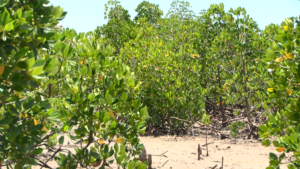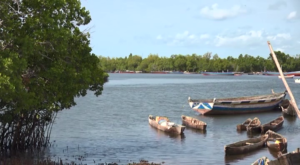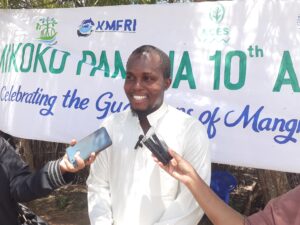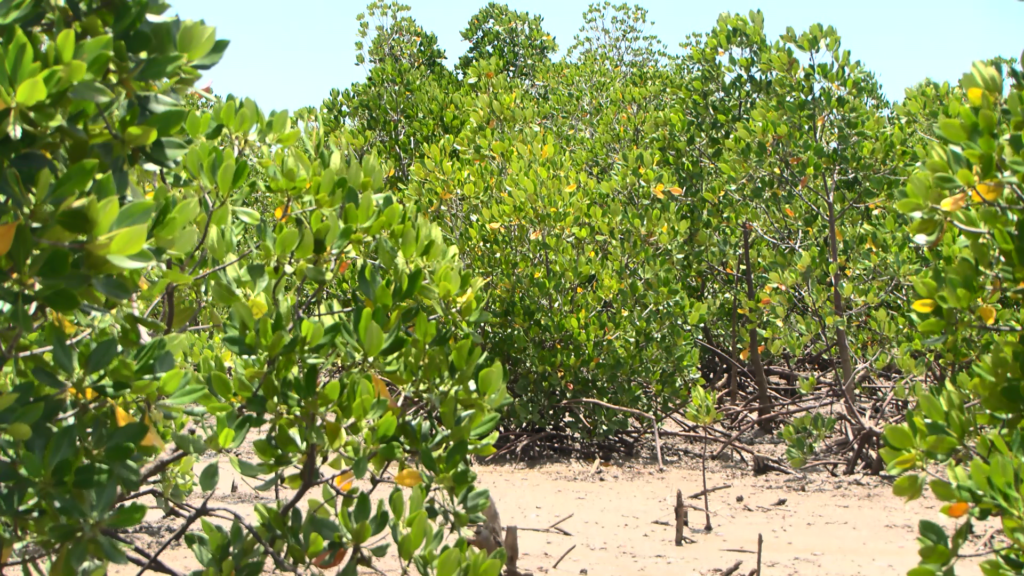By Caroline Katana
Mangrove forests are important strategic assets that provide many benefits for sustainable development and offer diverse ecosystem services, including climate change mitigation, recreation, coastal protection, and food production.
Despite these benefits, only four countries account for over 40 percent of the total global mangrove area, Indonesia leads with 19 percent, followed by Brazil with 9 percent, Nigeria with 7 percent, and Mexico with 6 percent according to the Food and Agricultural Organization ( FAO) 2020 report.
However, with the changing global socio-economic development matrices occasioned by factors such as population growth, urbanization, and climate change, existing literature shows that mangrove forest resources are on a decline.
In Kenya, mangrove forests are valued for their ecological and socio-economic importance, still, they remain under the constant threat of loss due to deforestation and degradation occasioned by various reasons.
The decline of mangroves has detrimental effects on various aspects, such as fisheries, the stability of shorelines, and the long-term sustainability of resources.
With the advent of the 2010 constitution, which introduced county governments and the growing human need for forest products, this paper argues that limited scientific studies have compared the current status of mangroves in devolved units (counties) that should be urgently addressed.
Kenya is an appropriate study site for the challenges of sustainable management of mangrove forests, given its rich diversity of mangrove forest ecosystems, diverse stakeholders, history of community-based natural resource management, environmental and socio-economic pressures, and growing interest in sustainable development and conservation.
The Kenyan Constitution 2010 recognizes the need to increase the national tree cover to at least a minimum of 10% by the year 2030.
This development aspiration is also in line with Kenya’s commitment to restore 5.1 million hectares of forest and degraded landscapes, which formed part of the African Forest.
Landscape Restoration Initiative (AFRI100) target, and the Nationally Determined Contribution (NDC) target of reducing greenhouse gas emissions by 32% by 2030 relative to a business-as-usual scenario.
Mangroves are found in Lamu, Kilifi, Mombasa, Tana River, and Kwale counties along the Kenyan coast in Kenya.
Kilifi County is the most populous, while Lamu County is the least populous and has the highest tree cover.
Mombasa County is a city county and has experienced increased infrastructural developments.
The blue economy’s emphasis on conservation has led to effective adopt-a-forest partnerships, transforming mangrove conservation with promising outcomes.
The ongoing Mikoko Pamoja project, an innovative carbon credit, and payment for ecosystems services (PES) scheme in Gazi Bay, Kwale County, has shown that a local mangrove conservation project can have positive, sustainable development impacts by way of protecting threatened ecosystems and improving the livelihoods of local community members.
Gazi Bay, Kenya’s residents lost 20% of their mangrove forests in 2010, they partnered with Plan Vivo and ACES to launch a conservation project.
The project now protects 117 hectares of mangroves with full-time guards and involves community members in regular reforestation efforts.
The Mikoko Pamoja project generates income for the Gazi and Makongeni communities by selling carbon credits from avoided CO2 emissions.
Payments from the sale of credits funded a project manager, guards, and community initiatives like purchasing books and installing clean water pumps at schools.
The success of the Mikoko Pamoja project is attributed to the active involvement and support of Gazi and Makongeni residents, transparent plans were agreed upon, addressing land use and revenue generation.
Negative impacts were mitigated by planting pine trees as alternative building materials for the community.
Residents of Gazi in Kwale County are a typical fisher’s community, living a subsistence lifestyle with limited agricultural activities to sustain them.
Their poverty level is presumably very high as well according to the National Population Census of 2009 by the Kenya Bureau of Statistics given the low education levels.
Speaking during the 10th-anniversary celebrations of Mikoko Pamoja at Gazi, Mikoko Pamoja community organization project coordinator Mohamed Kassim Juma affirmed that the extraction of mangrove trees impacted negatively not only their livelihoods but also the environment in Gazi Bay.
“The community remained the main target for illegal loggers of mangrove trees because the poles in this specific area are suitable for construction for they are straight and more usable, mangroves are extracted for wood and fuel,” said Juma.
He said the community wake-up call came as their livelihood was threatened due to the destruction of the mangrove.
“ It started with a marked reduction of fish caught, this was directly attributed to excessive illegal logging since mangrove forests are home to a large variety of fish, crab, shrimp, and mollusk species, the mangrove forests also serve as nurseries for many fish species including coral reef fish,” added Juma.
Juma said that since its inception in 2014, Mikoko Pamoja Community Based Organization has been able to conserve 117 hectares of mangroves in Gazi Bay.
“Through the technical support from Kenya Marine and Fisheries Research Institute (KMFR), we established new mangrove forests covering 10 ha and in return, we received a total of Ksh 1.5 million shillings for the first installment,” said Juma
Game –changer
The key that unlocked the intervention that sought to resuscitate the livelihood of the Gazi Bay community and reverse the depletion of the mangroves was the realization by the villagers that the mangrove forest does not belong to the government.
This important realization initiated the need for community involvement in the conservation of mangroves and in return, they get paid as a direct benefit from conservation.
The key interventions include sensitization of the community members on how cutting down mangrove trees destroys fish nests and other marine life that in turn affects their livelihood.
Saumu Ali, a Mikoko Pamoja member, said the interventions have since brought tangible outcomes, especially in conserving the environment and the annual income.
“We are reaping benefits through the annual income that comes directly to us, this is our alternative source of income, one of the major milestones was the formation of the Community Forest Association (CFA) through which the community protected and established new mangrove forests for carbon trade with the technical assistance from KMFRI,” she said.
The children of Gazi have equally benefited after they received textbooks from the earning of the second proceeds of the carbon trade worth Ksh. 150,000.
Across Makongeni, the first installment was used to buy textbooks worth Ksh .150, 000 for Makongeni primary school.
KMFRI Senior research scientist Amina Juma Hamza said since its inception, Mikoko Pamoja has generated USD 210,000 for the community through the abatement of 18,500 tons of carbon dioxide emissions.
“Mangroves are the livelihood of coastal communities, they serve as habitats for a myriad of marine species, some of which are of commercial significance, they also protect communities from storm surges and play an instrumental role in carbon sequestration,” said Hamza.
According to the United Nations Environment Programme (UNEP), mangroves play a pivotal role in climate action, unless studies underscore that these forests are carbon–rich fortresses .with a capacity to store on average,1000 tons of carbon per hectare within their biomass and subterranean soils, they are among nature–based solutions to climate change challenges.
Mikoko Pamoja was awarded the United Nations in Kenya Person of the Year on 24th October 2023.


